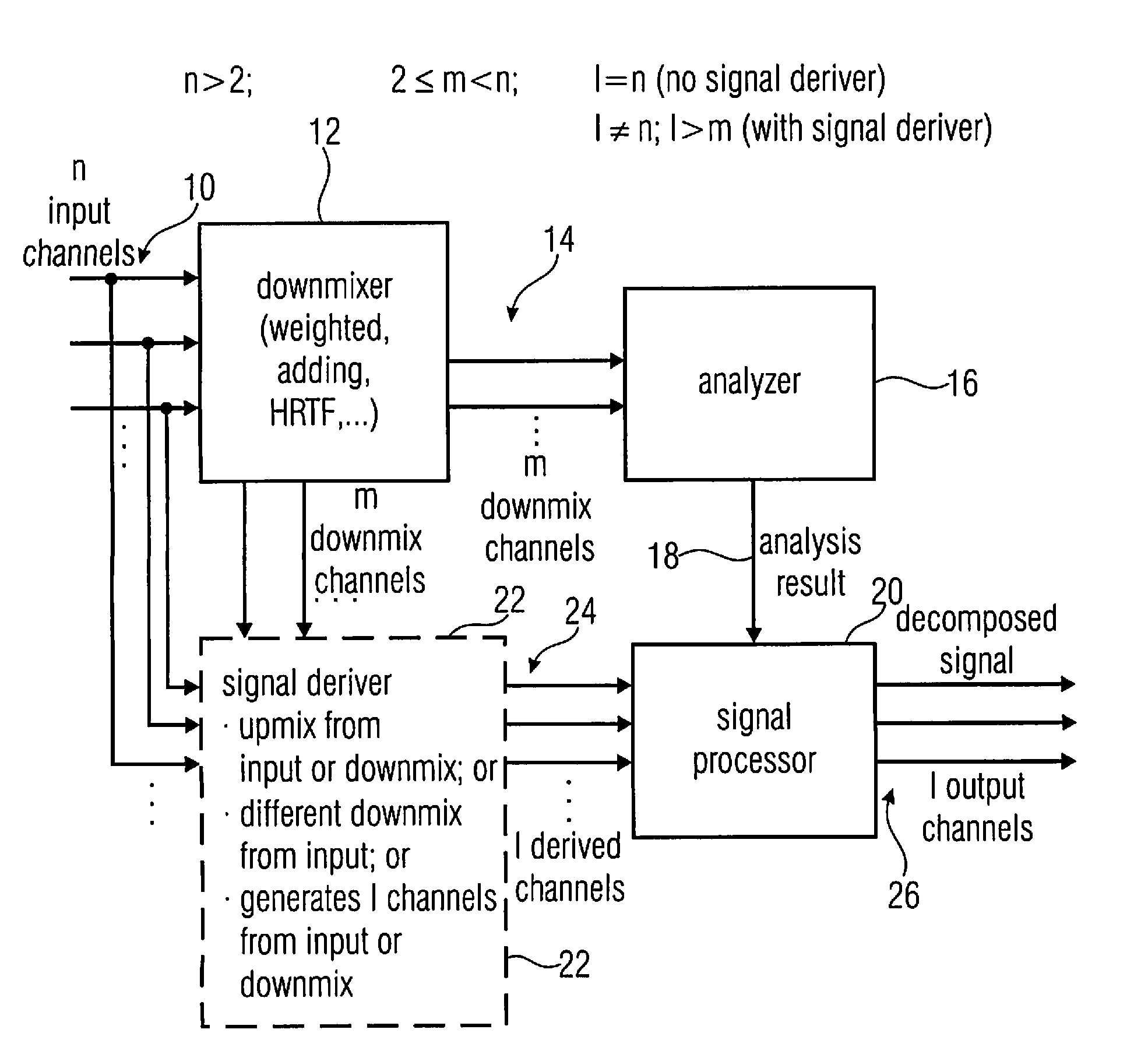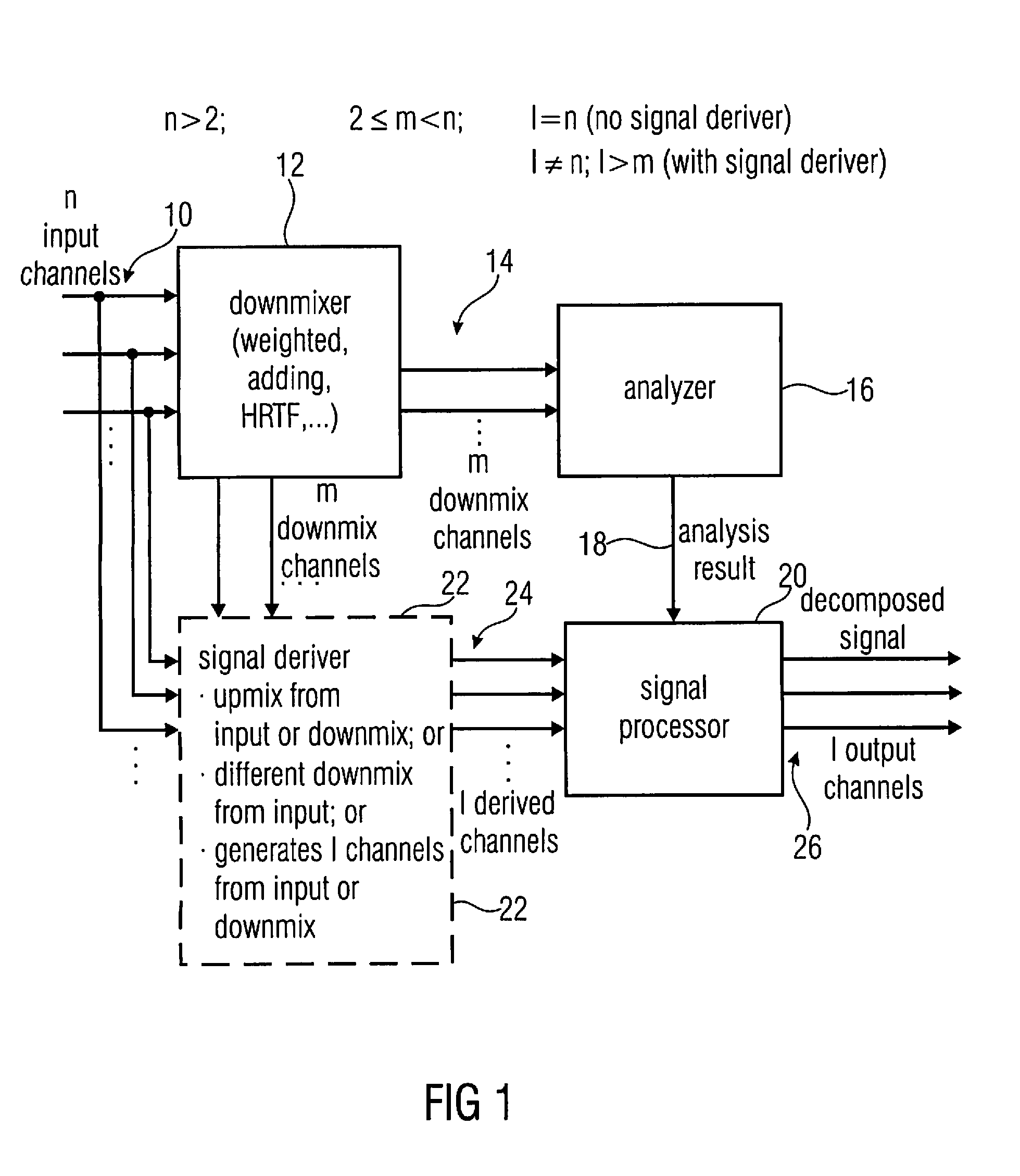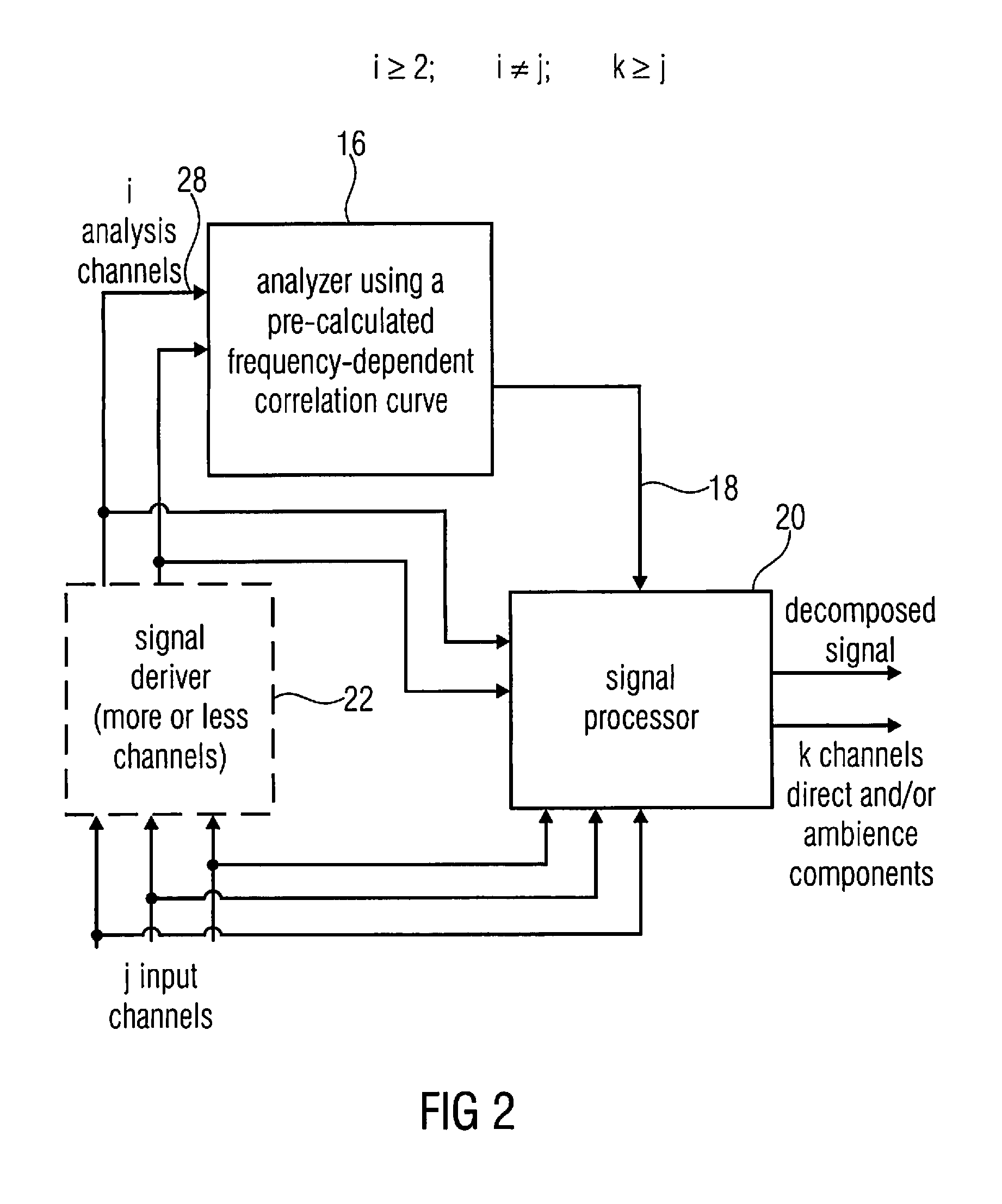Apparatus and Method for Decomposing an Input Signal Using a Downmixer
a downmixer and input signal technology, applied in the field of audio processing, can solve the problems of not being able to reproduce all naturally occurring reflections using dedicated transducers, not being able to apply described direct/ambient signal decompositions to multi-channel surround signals, and increasing the density of reflections, etc., to achieve efficient implementation of analysis and high flexibility of this procedur
- Summary
- Abstract
- Description
- Claims
- Application Information
AI Technical Summary
Benefits of technology
Problems solved by technology
Method used
Image
Examples
Embodiment Construction
[0045]FIG. 1 illustrates an apparatus for decomposing an input signal 10 having a number of at least three input channels or, generally, N input channels. These input channels are input into a downmixer 12 for downmixing the input signal to obtain a downmixed signal 14, wherein the downmixer 12 is arranged for downmixing so that a number of downmix channels of the downmixed signal 14, which is indicated by “m”, is at least two and smaller than the number of input channels of the input signal 10. The m downmix channels are input into an analyzer 16 for analyzing the downmixed signal to derive an analysis result 18. The analysis result 18 is input into a signal processor 20, where the signal processor is arranged for processing the input signal 10 or a signal derived from the input signal by a signal deriver 22 using the analysis result, wherein the signal processor 20 is configured for applying the analysis results to the input channels or to channels of the signal 24 derived from th...
PUM
 Login to View More
Login to View More Abstract
Description
Claims
Application Information
 Login to View More
Login to View More - R&D
- Intellectual Property
- Life Sciences
- Materials
- Tech Scout
- Unparalleled Data Quality
- Higher Quality Content
- 60% Fewer Hallucinations
Browse by: Latest US Patents, China's latest patents, Technical Efficacy Thesaurus, Application Domain, Technology Topic, Popular Technical Reports.
© 2025 PatSnap. All rights reserved.Legal|Privacy policy|Modern Slavery Act Transparency Statement|Sitemap|About US| Contact US: help@patsnap.com



